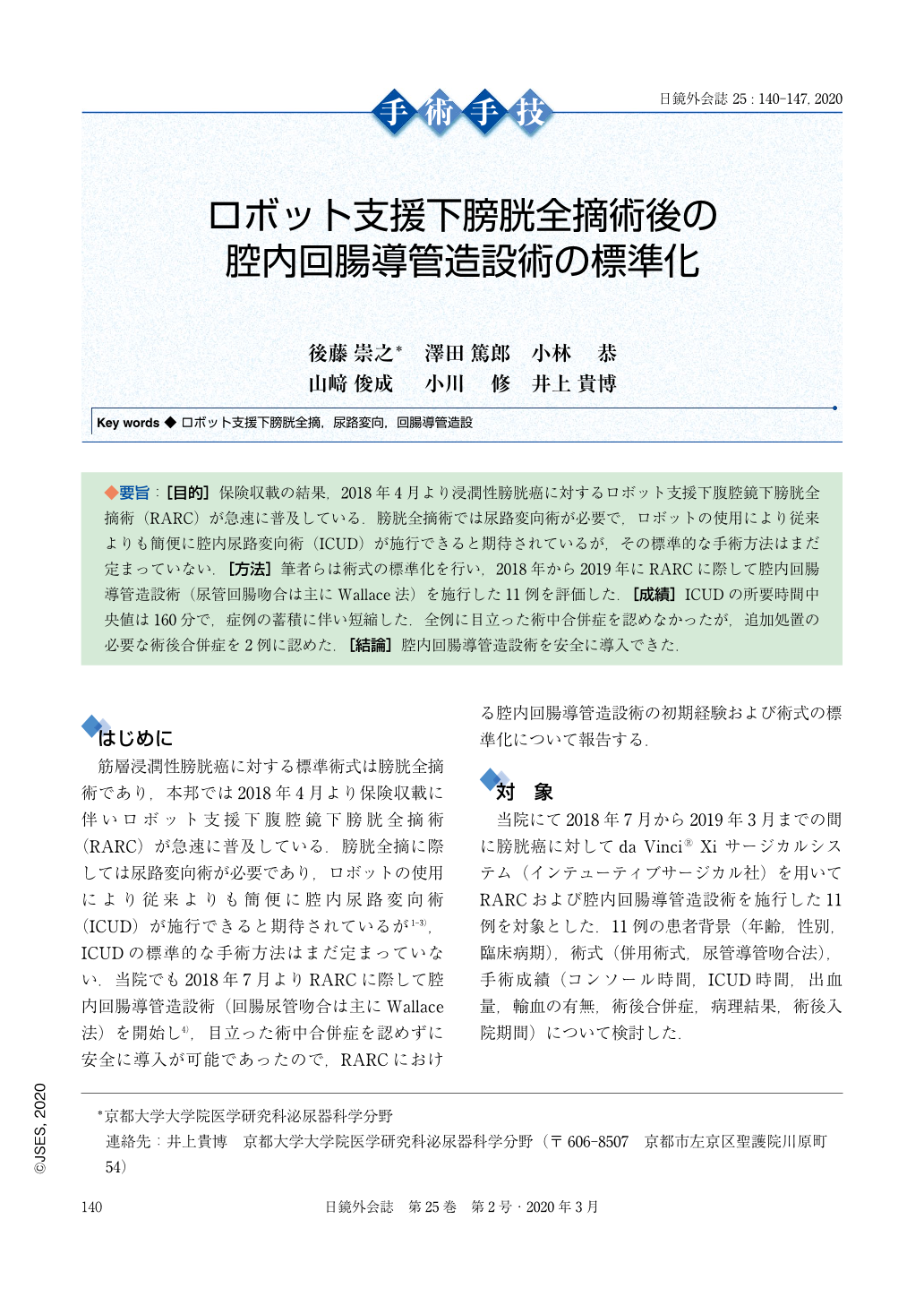Japanese
English
- 有料閲覧
- Abstract 文献概要
- 1ページ目 Look Inside
- 参考文献 Reference
◆要旨:[目的]保険収載の結果,2018年4月より浸潤性膀胱癌に対するロボット支援下腹腔鏡下膀胱全摘術(RARC)が急速に普及している.膀胱全摘術では尿路変向術が必要で,ロボットの使用により従来よりも簡便に腔内尿路変向術(ICUD)が施行できると期待されているが,その標準的な手術方法はまだ定まっていない.[方法]筆者らは術式の標準化を行い,2018年から2019年にRARCに際して腔内回腸導管造設術(尿管回腸吻合は主にWallace法)を施行した11例を評価した.[成績]ICUDの所要時間中央値は160分で,症例の蓄積に伴い短縮した.全例に目立った術中合併症を認めなかったが,追加処置の必要な術後合併症を2例に認めた.[結論]腔内回腸導管造設術を安全に導入できた.
[Background] Because robot-assisted radical cystectomy (RARC) for invasive bladder cancer became eligible for insurance coverage in April 2018, RARC has been widely performed in Japan since that time. Ureteral diversion is needed after RARC, and a totally intracorporeal urinary diversion (ICUD) is performed in some institutes in Japan. However, the techniques for ICUD have not been standardized. We evaluated the initial experience of a totally intracorporeal ileal conduit (IC) after RARC at Kyoto University Hospital. [Methods] We standardized the techniques of an intracorporeal IC using the Wallace method, and retrospectively analyzed the records of 11 patients who underwent RARC followed by an intracorporeal IC from 2018 to 2019. [Results] The median age of the patients was 69 years and the median operative time to create an intracorporeal IC was 160 minutes. However, a trend toward shorter operative time in IC was associated with increased experience. Intraoperative complications were not observed, whereas Grade 3 postoperative complications according to the Clavien-Dindo classification were observed in two patients. [Conclusions] Intracorporeal IC after RARC can be safely performed with acceptable operation times even early in the learning curve.

Copyright © 2020, JAPAN SOCIETY FOR ENDOSCOPIC SURGERY All rights reserved.


